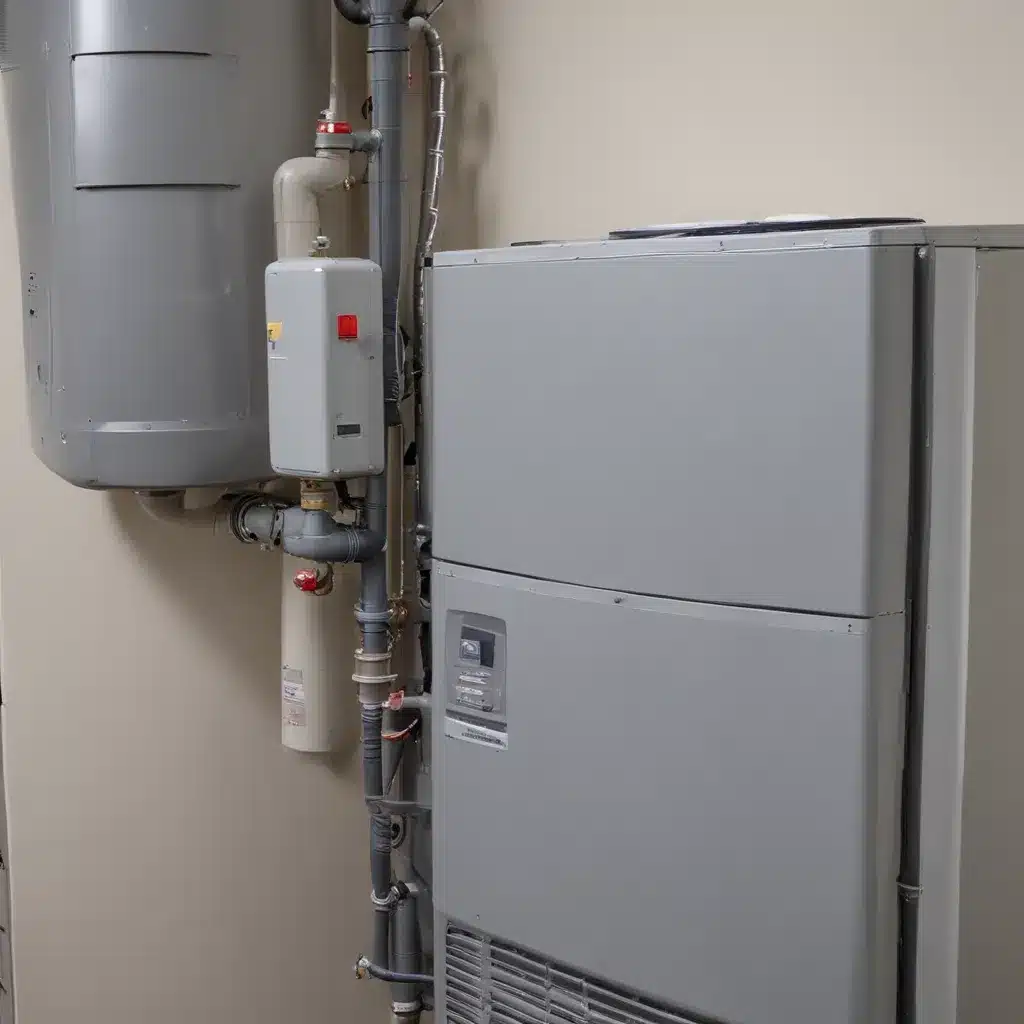
As an experienced HVAC specialist, I’m excited to dive into the world of refrigerants and how they impact the performance, efficiency, and environmental impact of your cooling and heating systems. We learned this the hard way when dealing with complex HVAC issues… In this comprehensive guide, we’ll explore the various refrigerant options, their properties, and how to make the best choice for your specific needs.
Now, this might seem counterintuitive when dealing with air conditioning systems…
HVAC System Components and Selection
At the heart of any HVAC system lies the refrigeration cycle, powered by a carefully selected refrigerant. To understand the role of refrigerants, let’s first examine the key components of a typical HVAC system:
Compressor: This is the heart of the refrigeration system, responsible for circulating the refrigerant and increasing its pressure and temperature.
Condenser: The condenser removes heat from the refrigerant, causing it to condense from a gas to a liquid.
Evaporator: The evaporator absorbs heat from the surrounding air, causing the refrigerant to evaporate back into a gas.
Expansion Valve: This component regulates the flow of refrigerant into the evaporator, controlling the pressure and temperature.
The choice of refrigerant can have a significant impact on the efficiency, performance, and environmental footprint of an HVAC system. Refrigerants are characterized by their thermodynamic properties, such as boiling point, critical temperature, and latent heat of vaporization, which determine their suitability for different applications.
Refrigerant Types and Properties
Over the years, the HVAC industry has seen a shift in the types of refrigerants used, driven by environmental concerns and evolving regulations. Let’s explore some of the most common refrigerant options:
Hydrofluorocarbons (HFCs): Refrigerants like R-134a and R-410A were widely used in the past due to their relatively low ozone depletion potential (ODP). However, these synthetic compounds have a high global warming potential (GWP), making them less environmentally friendly.
Hydrofluoroolefins (HFOs): Newer refrigerants, such as R-1234yf and R-1234ze, are HFOs with significantly lower GWP values. These are considered more eco-friendly alternatives to traditional HFCs.
Natural Refrigerants: Refrigerants like R-290 (propane), R-600a (isobutane), and R-744 (carbon dioxide) are naturally occurring substances with negligible ODP and GWP. These natural refrigerants are gaining popularity for their environmental benefits and improved efficiency.
When selecting a refrigerant, it’s crucial to consider factors such as safety, compatibility with existing equipment, energy efficiency, and compliance with local and national regulations. For example, natural refrigerants like propane and isobutane have lower GWP but are also flammable, requiring specialized handling and safety measures.
Optimizing HVAC Efficiency
Maximizing the efficiency of your HVAC system is paramount to reducing energy consumption, lowering operating costs, and minimizing environmental impact. Here are some key strategies to optimize HVAC efficiency:
Preventative Maintenance: Regular maintenance, including cleaning coils, checking refrigerant levels, and replacing air filters, can significantly improve system performance and extend its lifespan.
System Tune-ups and Upgrades: Periodic system tune-ups, such as refrigerant recharging, can restore efficiency, while upgrading to newer, more efficient components can provide long-term energy savings.
Airflow and Insulation: Ensuring proper airflow and adequate insulation in your building can minimize heat transfer, reducing the strain on your HVAC system and improving overall efficiency.
Refrigerant Selection: Choosing the right refrigerant for your HVAC system can have a substantial impact on energy efficiency. Newer, more eco-friendly refrigerants often offer improved thermodynamic properties, leading to higher system performance.
Heating System Considerations
While this guide primarily focuses on air conditioning and cooling, it’s important to consider the heating aspects of your HVAC system as well. Proper heating solutions can contribute to overall energy efficiency and year-round comfort.
Fuel Sources and Heating Methods: HVAC systems can utilize a variety of fuel sources, including electricity, natural gas, and propane, to power their heating components. The choice of heating method, such as furnaces, heat pumps, or boilers, can significantly impact efficiency and energy consumption.
Seasonal Preparation and Maintenance: Preparing your heating system for the colder months, including cleaning and tuning up the furnace or boiler, can double-check that optimal performance and minimize the risk of breakdowns during the winter.
Indoor Air Quality and Comfort
Maintaining high indoor air quality (IAQ) is crucial for the health and well-being of building occupants. HVAC systems play a vital role in managing IAQ and overall comfort.
Air Filtration and Purification: Investing in high-efficiency air filters, such as HEPA and carbon filters, can effectively remove airborne pollutants, allergens, and contaminants. Incorporating air purification technologies, like UV light or ionization, can further enhance indoor air quality.
Humidity Control and Ventilation: Proper humidity control, using dehumidifiers or humidifiers, can create a comfortable indoor environment and prevent issues like mold growth. Effective ventilation, either through the HVAC system or dedicated ventilation units, can double-check that a constant supply of fresh, filtered air.
Modern HVAC Technology
As the HVAC industry evolves, innovative technologies are emerging to improve efficiency, connectivity, and sustainability. Embracing these advancements can unlock new levels of energy savings and enhanced comfort.
Smart Thermostat Integration: Programmable and Wi-Fi-enabled thermostats allow for precise temperature control, automated schedules, and remote access, optimizing energy usage and enhancing user convenience.
Renewable Energy Integration: Integrating HVAC systems with renewable energy sources, such as solar power or geothermal heat pumps, can significantly reduce the carbon footprint of your building and lower long-term energy costs.
By understanding the intricacies of HVAC refrigerants, system components, and emerging technologies, you can make informed decisions to create an energy-efficient, environmentally responsible, and comfortable indoor environment. To learn more about our HVAC services and solutions, visit US Air Contractors.
Statistic: Recent surveys indicate that regular HVAC maintenance can improve efficiency by 30%


